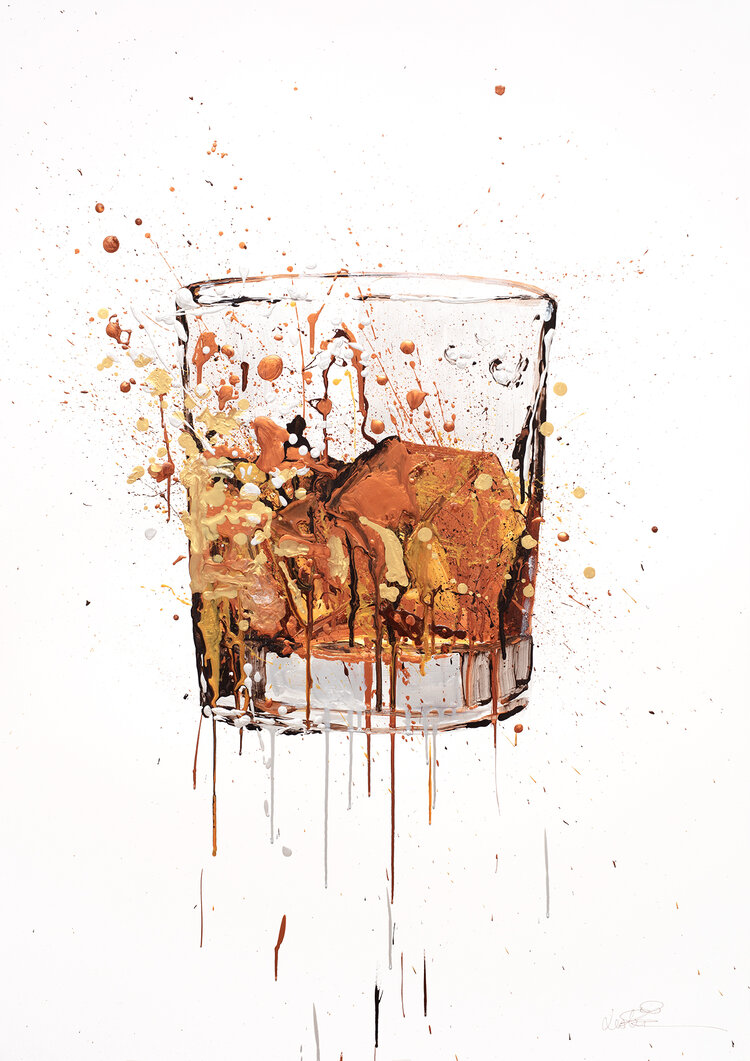The Significance of Whiskey Art in Celebrating Heritage and Workmanship in the Beverage Industry
The detailed connection in between scotch art and the celebration of heritage and workmanship within the beverage sector can not be overstated. Via thoughtfully designed containers and labels, bourbon brands envelop their historical origins and the artisanal skills that specify their manufacturing techniques.
The Historic Roots of Whiskey
At the heart of whiskey's attraction lies an abundant tapestry of historical origins that trace back to ancient human beings. The origins of bourbon can be linked to the purification techniques of the Sumerians and Babylonians around 2000 BCE, where early kinds of fermented grain beverages began to arise. It was in the Center Ages that the art of purification evolved considerably, specifically in Ireland and Scotland, leading to the creation of scotch as we understand it today.
The term "bourbon" itself derives from the Gaelic word "uisce beatha," implying "water of life." This expression emphasizes the cultural importance of scotch in Celtic cultures, where it was usually associated with rituals, events, and common bonding. By the 15th century, purification came to be a recognized craft within monastic neighborhoods, paving the method for the facility of lawful distilleries.
As profession courses increased, bourbon's appeal expanded, transcending regional boundaries and capturing the interest of connoisseurs worldwide. Whiskey Art. This historical journey shows not only the craftsmanship behind scotch production but also its essential role in social and cultural contexts, marking it as a considerable drink throughout background
Artistic Expression in Branding
Whiskey branding stands as an engaging intersection of virtuosity and business, where visual identity plays a vital duty in shaping consumer perception. The aesthetic appeals of bourbon labels, product packaging, and advertising and marketing materials mirror not just the brand name's story but likewise its core values and heritage. Through imaginative expression, distilleries share a story that resonates with consumers, stimulating feelings and stimulating connections.
The usage of color, typography, and imagery in branding offers to distinguish items in a saturated market. For instance, traditional concepts may stimulate a sense of credibility and craftsmanship, while modern-day styles can signify technology and forward-thinking. This calculated artistic instructions enhances brand acknowledgment and loyalty, enabling customers to forge an individual relationship with the scotch they pick.
Furthermore, imaginative expression in branding frequently functions as a party of regional heritage. Distilleries frequently integrate regional symbols or historical recommendations right into their designs, developing a sense of location that welcomes customers to take part in a wider social experience. Ultimately, the creativity behind scotch branding not just enhances aesthetic charm yet additionally improves the total story of the brand name, fostering a deeper recognition for the craftsmanship and heritage embedded in each bottle.
Workmanship in Container Layout
The virtuosity apparent in scotch branding extends past visual identification to encompass the craftsmanship associated with bottle style. Each bottle acts as a vessel not just for the spirit within, yet also for the tale it outlines its origin, practice, and top quality. The layout process calls for careful interest to information, as elements such as form, closure, and material add dramatically to the general understanding of the scotch.
Craftsmanship in bottle layout entails choosing top notch glass that can improve the whiskey's shade and quality, while likewise offering a tactile experience for the customer. The shape of the bottle must be both useful and visually appealing, frequently reflecting the heritage of the brand name. Numerous distilleries go with one-of-a-kind shapes or embossed logo designs that evoke a feeling of authenticity and background.
Additionally, the label layout and typography play a vital role in connecting the brand's story. Limited Edition. A well-crafted bottle not just captivates the customer's eye but additionally strengthens the brand name's commitment to top quality and custom. This way, the workmanship of bottle layout becomes an essential aspect of the bourbon experience, merging virtuosity with a profound respect for heritage
Social Importance of Bourbon Art
Celebrating custom and craftsmanship, the cultural value of whiskey art goes beyond plain aesthetic appeals, linking with the social and historical stories of the regions where it stems. Each bottle serves as a canvas, showing the distinct tales, mythology, and traditions that have formed neighborhood whiskey-making practices. The elaborate layouts often show the heritage of the distillers, integrating icons and motifs that resonate with the culture and worths of their neighborhoods.

Additionally, scotch art plays a vital function in public gatherings and parties, acting as a concrete web link between individuals and their shared experiences. By valuing the artistry in scotch product packaging, consumers grow a much deeper understanding and respect for the craft, eventually improving their enjoyment of the beverage itself.
Modern Trends in Whiskey Discussion
Over see here now the last few years, the discussion of bourbon has evolved to show contemporary tastes and trends while still recognizing standard craftsmanship - Limited Edition. Distilleries are significantly focusing on visual components that enhance the general alcohol consumption experience, linking the gap between heritage and modernity
Ingenious bottle layouts have actually arised, frequently integrating lasting products and imaginative tags that inform engaging stories. Many brands now work together with regional musicians, instilling their items with one-of-a-kind aesthetic expressions that reverberate with customers. In addition, limited-edition launches are often packaged description in collectible containers, adding value and appeal for connoisseurs.

Final Thought
In conclusion, whiskey art serves as a vital conduit for sharing the heritage and workmanship integral in the drink market. With elaborate branding, cutting-edge container styles, and culturally significant artistic elements, bourbon brand names successfully honor their traditions and attach with consumers.


Craftsmanship in container style includes selecting high-quality glass that can boost the scotch's color and clarity, while additionally supplying a tactile experience for the consumer. In this means, the craftsmanship of bottle layout ends up being a vital facet of the scotch experience, merging virtuosity with an extensive respect for heritage.
In verdict, scotch art offers as a crucial conduit for sharing the heritage and workmanship inherent in the drink industry.